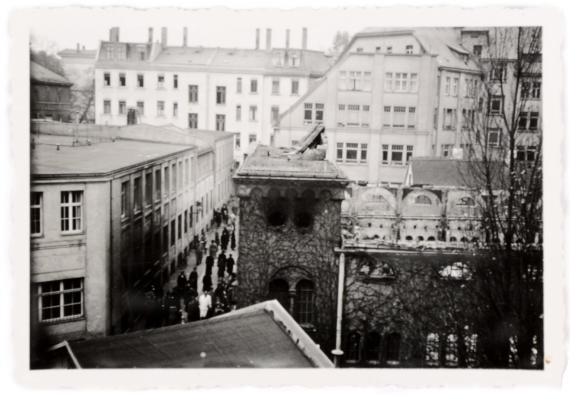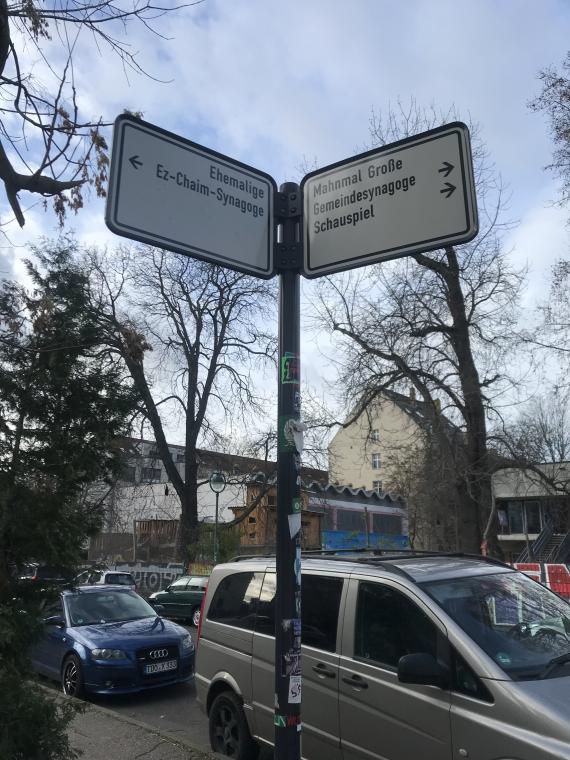Apels Garten 4
04109 Leipzig
Germany
The Ez Chaim Synagogue was the largest orthodox synagogue in Saxony from 1922 to 1938. It was located in the inner western suburb of Leipzig in a small, inconspicuous alley called Apels Garten. In 1920, the Leipzig Talmud-Thora Association acquired the property. There was already a hall on the site, which had been used as a bicycle and gymnasium in previous years. The hall remained standing and, with the financial support of the fur merchant Chaim Eitingon (1857-1932), the architect Johann Gustav Pflaume (d. 1930) was commissioned to convert the gymnasium into a synagogue.
Gustav Pflaume designed a gallery hall with a north-eastern orientation. The synagogue had 1200 seats (after an inspection by the building police in 1924, the number of seats had to be reduced to 905). The entire interior of the Ez Chaim Synagogue was lavishly decorated. Eight imposing chandeliers hung low from the ceiling. An elaborately designed bima (lectern) was positioned in the middle. A curved estrade on the north-eastern wall highlighted the area of the Aron ha-Kodesh (Torah shrine). Gustav Pflaume's most important change to the exterior was the newly designed portal zone with neo-Romanesque style elements. The double-door portals with glazed round arches led to an anteroom in front of the main prayer hall.
The Ez Chaim Synagogue was solemnly consecrated on September 10, 1922. From then on, it was the most important place of worship for Orthodox Judaism in Leipzig. It existed for 16 years until it was completely burnt out and destroyed in the night of November 9-10, 1938 by the arson attacks of the pogroms. For decades, there were no reminders of the Ez Chaim Synagogue on site. Only two signposts at the beginning and end of the alley showed the way to the former site - an information box from 2003 was destroyed in 2016 and has not been replaced since. As a result, the signposts were left blank for several years. In September 2022, the 100th anniversary of the consecration of the Ez Chaim Synagogue was celebrated. It provided the occasion for a week of festivities marked by lively commemoration. Since 2023, there has been a banner on an adjacent wall commemorating the synagogue. However, it remains to be hoped that the memory of what was once the largest Orthodox synagogue will also find firm roots at the authentic site, as Ez Chaim means "tree of life" - let this meaning speak for itself.




Add new comment